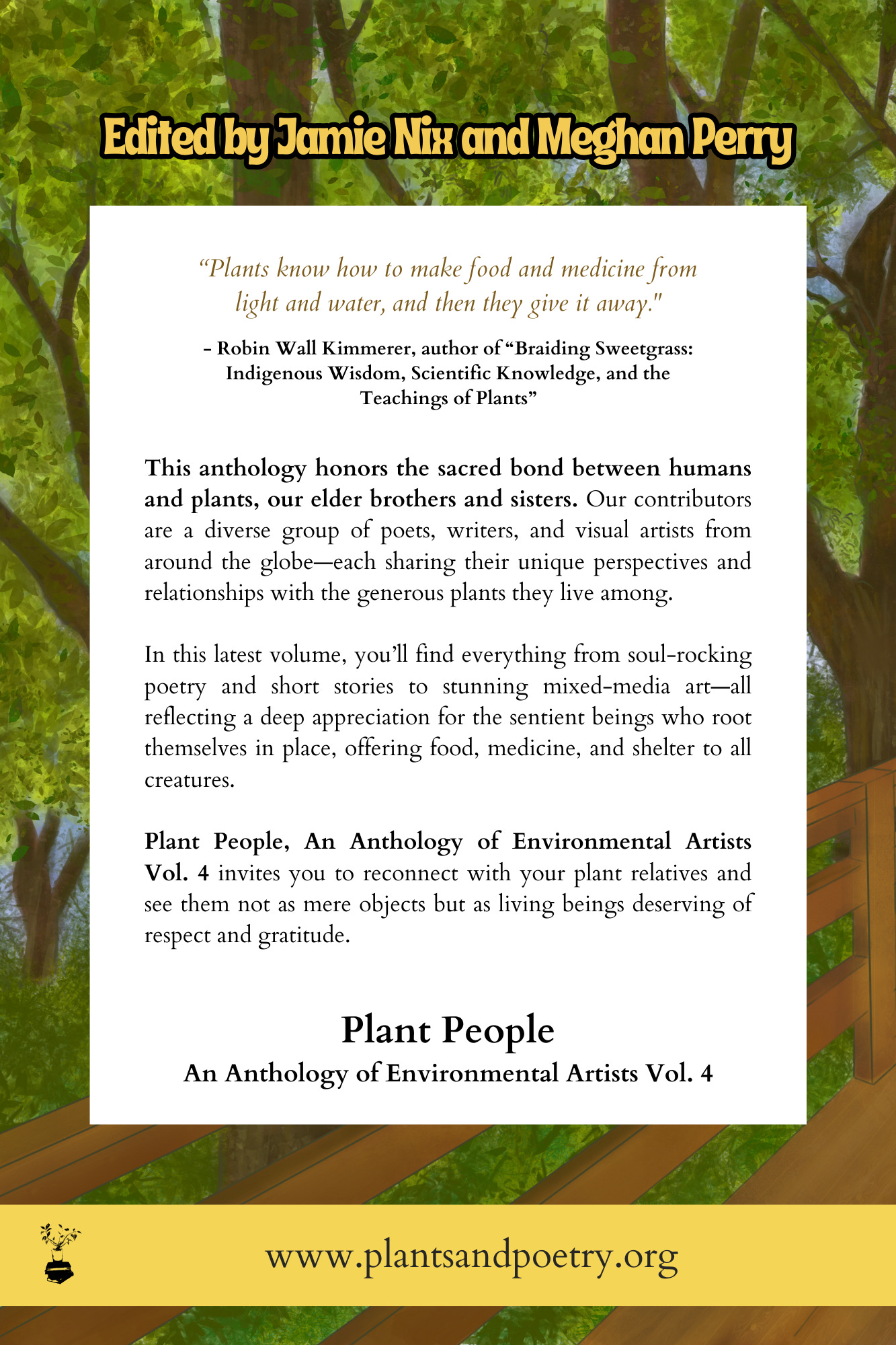Sometimes, Small is Beautiful. Very beautiful, indeed. Indeed, perhaps the only way to go. A brave and resourceful collective of environmentalists and environment-crafters (my term, not theirs, but I believe it can crown their glory) are determinedly bringing out anthologies of creative work that articulate and celebrate why people need plants even more than plants need people.
My tiny contribution to the new Plant People, An Anthology of Environmental Artists Vol. 4, is on p. 79, but a preview is below:
From “As Though of Hemlock”
“Don’t leave the trash bag out in the driveway forever,” the young tree in the front grass-patch they call a lawn hears the mother tell her son.
It’s a mild April day, and yet the young tree shivers. The boy does have a tendency to just let the plastic garbage bags sit—he thinks out of sight—in the driveway, about a man’s length away from the tree. Sometimes flies start colonizing the garbage, buzzing on the ooze, leaping up drunk into the face of the person or cat passing from driveway to side patio door. The young tree thinks, “I object.”
When the boy passes into or from the house for some reason or another, the tree wishes hard for a nice long shiver or even a big shake from a sudden gust of wind, to scare the boy. Scold him. Or warn him. Tell him it’s not nice. First your mother, then your front ‘lawn’ tree, is telling you to take care of the trash. Don’t let the rot just sit there. Please. The wind usually doesn’t cooperate. The tree suffers, silent, still. Till at some point the mother raises her voice, the boy shoots out of the house, the bag is yanked away and bobs down the street to the dumpster. The tree sighs, does its best to shake its branches. Rustle away the lingering stench.”
. . .
and from “Our Vegetable Loves”
“How can you say I don’t eat them?”
The topic is vegetables.
The heated debate in the kitchen is about whether fruits and vegetables are being eaten in appropriate quantities by the teenager, a fact in question by, of course, the teenager’s mother. The tree overhears because they’ve left the windows of the living room open. Sound floats out of there.
“I ate the potatoes you made the other day, didn’t I, and I eat vegetables I make myself, all the time.”
“Like what?”
The words, the tones, already have the quality of a lingering viral fever. Almost unnoticeable, but really weakening. The mother and son seem to be unable to circle each other in this way, the tree thinks. On some issue or another. Today it’s vegetables. Yesterday it was…? Tomorrow it will be…?
Having language, things with sounds, make them waste it. There’s no point in having something so precious as the gift of language, without limits or conditions, if you’re just going to misuse it, throw it around, waste it. Because with words comes a sense of past and present, time and history, memories. Time doesn’t exist without language. How? It’s hard to explain, but the tree knows this is the case. Certain birdsongs are popular among certain birds, gets the boy birds girl birds, but in the end, there are only two or maybe three birdsongs per bird group. You can’t be faulted if it gets a little monotonous. If at times you want more. Experiment. Variety. Even the unknown. At least the young tree does. With two birdsongs per bird group, say, you reach the end every time those two are sung. What comes tomorrow in that plan? The same. More of the same. So tomorrow is just like today, just like yesterday, and all the yesterdays before that. There’s no movement. No progress. Without movement and progress, what do we end up with? Simple. Death. Not even a complex death. A simple death. I was born. I grew up. I sang for my honey. We made more birds, We died. And the same story for our birds.
. . .
Please, if you care about life on earth, check out and share the information below.
Plant People, An Anthology of Environmental Artists Vol. 4
$25.00
Plant People, An Anthology of Environmental Artists Vol. 4
This anthology honors the sacred bond between humans and plants. Our contributors are a diverse group of poets, prose writers, and visual artists from around the globe—each sharing their unique perspectives and relationships with the plants they live among.
Poetry | Prose | Mixed Media






